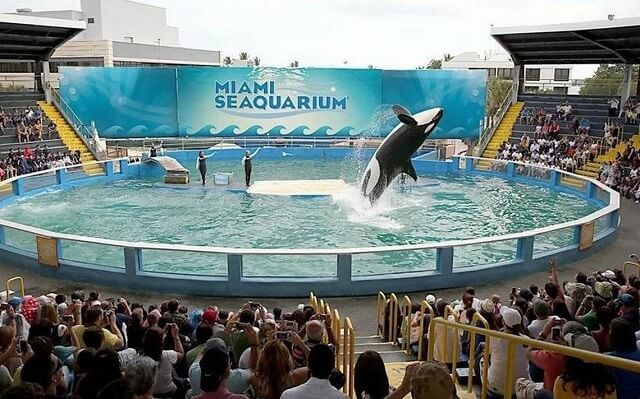On a bright sunny day in Florida, I made the executive decision to visit the Miami Seaquarium.
I was 11 years old and as obsessed with dolphins as any one child could possibly be. I had at least 20 dolphin plushies in my room, I wore dolphin jewelry, and when any opportunity came up, I scrambled to see dolphins in person.
On this particular day in January 2020, instead of trying to see dolphins in the wild, my little naïve self decided to visit Lolita (also known as Tokitae or Toki), the mainstay performing orca at the Seaquarium for more than 50 years. At the time, I had no idea that Lolita and other captive cetaceans suffer in their tanks and that about three and a half years later, Lolita would die tragically at the estimated age of 57.
According to a news release by the Seaquarium, Lolita was very healthy three days prior to her death. She was eating well—up to 115 pounds of salmon, capelin, squid, and herring—and spent her time swimming laps and playing with toys. She was “very stable and as good as she can be at 50 years of age.” However, on Aug. 18, 2023, Lolita perished due to an apparent renal condition. Her condition deteriorated quickly after the news release, and she succumbed to her pain. The irony of it all is that in February, after many pressures and accusations of animal abuse over the years, Miami Seaquarium formally announced the plan to release Lolita back into her native waters of Puget Sound in Washington state. Now Lolita will never again get the chance to be free.
Unfortunately, if Lolita was to ever be released, it would have been in late 2024 to early 2025. The Miami New Times provided disheartening information about Lolita’s health in the years leading up to her death. For instance, Lolita had already been struggling with an ongoing chronic infection for the past 2 years, receiving high amounts of antibiotics often while battling this disease. This information tells that Lolita would have probably never survived to her original release date.
Additionally, Lolita had been forced to “perform” at least two or three times a day ever since she was 4, when she was taken from the ocean and her family. In addition, according to the New York Times, she lived in the world’s smallest orca tank with a Pacific white-sided dolphin (Li’i), with dimensions of 80 feet long and 35 feet wide for an animal that weighed 7,000 pounds and measured 20 feet long. Animal rights organization PETA (People for the Ethnic Treatment of Animals) also states that Lolita suffered from sun damage, with records showing that she had dry, cracked skin. These situations could all have been contributing factors to her declining health up to Aug. 18.
Even after Lolita’s death, the ravaging public opinion continues, with PETA and the Lummi Nation of the Pacific Northwest fighting for Lolita’s memory to be brought to fruition. Protesters with PETA gathered outside the aquarium soon after the news of her death, raising signs that read, “Captivity killed Lolita,” and “Lolita deserved to be free.” A PETA activist in the protest said that “the plans to move her to a seaside sanctuary came far too late,” and pleaded for the general public to stop buying tickets to marine parks.
As an aspiring marine biologist and dolphin activist, I believe the environment in which Lolita was forced to survive in for 53 agonizing years was extremely unsafe and unstable with an extraordinarily small tank and no shelter from the sun. Orcas and marine mammals alike are all exceptionally intelligent creatures and shouldn’t be captured and taken from their families so young only to live the rest of their lives in misery.
Li’i is still in isolation at the Miami Seaquarium, and even though plans have been recently announced to relocate him, he would still be moved to either the Shedd Aquarium in Chicago or a SeaWorld location. Li’i and all other cetaceans in captivity deserve a life where they can swim freely in the ocean with their families.
Hopefully, in the coming years, SeaWorld and other captive facilities worldwide will realize their mistakes and release their dolphins into seaside sanctuaries where they can once again feel a sense of freedom.




























































































